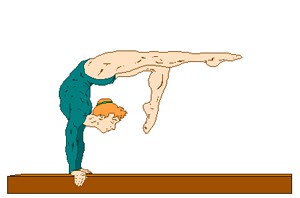- Urinary Incontinence and voiding dysfunction
- Men: Stress Urinary Incontinence
- Men: Pelvic Floor Rehabilitation
- Men: Transurethral Injection of Bulking Agents
- Men: Male Slings
- Men: Artificial Urinary Sphincter (AUS)
- Men: Adjustable continence device (Pro-ACT ) (Investigational)
- Women: Stress Urinary Incontinence
- Women: Pelvic Floor Rehabilitation
- Women: Transurethral Injection of Bulking Agents
- Women: Minimally Invasive Slings
- Women: Adjustable Continence Device
- Urge Incontinence in men and women
- Behavior Modification, Pelvic floor Rehabilitation and Biofeedback
- Botox Injection
- Sacral Neuromodulation
- Percutenous Tibial Nerve Simulation (PTNS)
Women: Stress Urinary incontinence

Stress Incontinence in women
This is the loss of urine associated with laughing, sneezing, coughing, physical or sexual activities.
Stress urinary incontinence is most frequently due to weakness in pelvic floor with poorly supported bladder and urethral sphincter. This results in the inefficient function of both the bladder and the sphincter muscle. Weakness of the pelvic floor and poor support of the bladder and the urethra can result from multiple factors including multiple pregnancies and deliveries which result in stretching of the vaginal wall and the surrounding pelvic muscles, aging, menopause with hormonal changes and deficiency of estrogen. Additional factors include congenital weakness, smoking and obesity
The vaginal is located in the central portion of the pelvic floor. Weakness of the pelvic floor, create an out-pouching of the vagina. This results in displacement and herniation of the bladder and the urethra, anteriorly, a condition known as Cystocele as well as herniation of the rectum posteriorly, a condition known as Rectocele. Excessive displacement and out-pouching of the bladder and the urethra can cause the loss of urine with any physical activities. It can also cause a large bulge in the vagina, which can make emptying of the bladder very difficult, cause pain specially during walking and interfere with sexual activities.
Evaluation:
Video-Urodynamic is an in-depth evaluation of the function of the lower urinary tract and the pelvic floor muscles. It allows simultaneous Urodynamic assessment of the bladder and the sphincteric function with X-ray imaging of the lower urinary tract, electromyography to assess the strength and the function of the pelvic floor. We always recommend it prior to any surgical intervention
Treatment options:
- Pelvic floor rehabilitation
- Bulking agents
- Minimally invasive slings
- Adjustable continence device (Investigational

